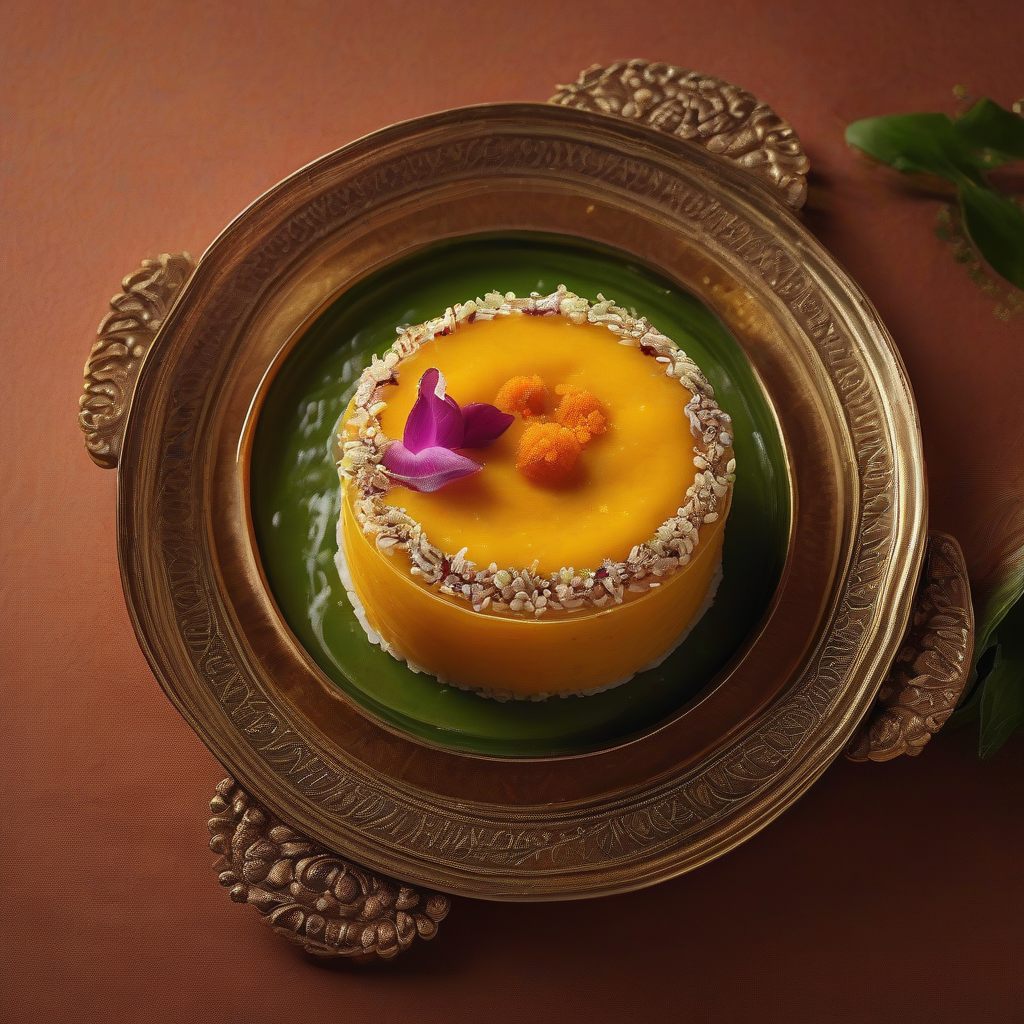Kesari Bliss: Sweeten Your Life, One Spoonful at a Time!
Namaste Dosto! Kem Chho? Sat Sri Akal! Chef Curry Do’pyaza here, ready to whisk you away on a delightful culinary journey. Today, we’re diving into the golden, fragrant world of Kesari, a sweet treat that’s as beautiful to look at as it is delicious to devour.
Kesari is more than just a dessert; it’s a celebration! It’s a sweet symphony played during joyous occasions like Diwali, Ugadi, weddings, and even simple family get-togethers. Think of it as sunshine captured in a bowl, perfect for chasing away the winter blues or adding sparkle to a summer evening. In South India, it is called as Rava Kesari and is very popular.
A Sprinkle of History
The history of Kesari is a bit like the dish itself – rich and layered. It’s believed to have originated in South India, where it was known as “Kesari Bath.” The name comes from “kesar,” the Hindi word for saffron, the precious spice that gives this dessert its vibrant color and unique flavor. Over time, this delectable dish has traveled across India, evolving with regional variations but always retaining its essential charm.
Let’s Get Cooking!
Preparation Time: 10 minutes
Cooking Time: 20 minutes
Ingredients:
- Sooji (Semolina): 1 cup (Use fine or medium variety)
- Ghee (Clarified Butter): 1/2 cup (The real deal, friends! Don’t skimp on this)
- Cheeni (Sugar): 1 cup (Adjust to your sweet tooth’s desire)
- Pani (Water): 2 cups (Important for that perfect, fluffy texture)
- Kesar (Saffron) Strands: A pinch (About 15-20 strands)
- Elaichi Powder (Cardamom Powder): 1/4 teaspoon (For that aromatic touch)
- Kaju (Cashews): 1/4 cup, chopped (Adds a delightful crunch)
- Badam (Almonds): 1/4 cup, chopped (Adds a delightful crunch)
- Kishmish (Raisins): 1/4 cup (Plump and juicy!)
- Food color: A pinch of orange or yellow (Optional, for a deeper color)
Instructions:
- Saffron Infusion: In a small bowl, soak the saffron strands in 2 tablespoons of warm milk or water. This will release their beautiful color and flavor.
- Roasting the Sooji: In a heavy-bottomed pan or kadai, melt half of the ghee over medium heat. Add the sooji and roast it, stirring constantly, until it turns a light golden brown and gives off a nutty aroma. This usually takes about 5-7 minutes. Be careful not to burn it!
- Adding the Water: Carefully pour in the water. The mixture will sizzle and steam, so stand back a bit! Stir continuously to prevent lumps from forming.
- Simmering to Perfection: Reduce the heat to low, cover the pan, and let the sooji cook until it absorbs all the water. This will take about 5-7 minutes. The mixture should look thick and fluffy.
- Sweetening the Deal: Add the sugar and stir well until it dissolves completely. The mixture will become slightly watery again, but don’t worry, it will thicken as it cooks.
- Adding the Goodies: Stir in the saffron-infused milk (or water), cardamom powder, and the remaining ghee. Mix well.
- Nuts and Raisins: In a separate small pan, melt a teaspoon of ghee and lightly roast the cashews, almonds and raisins until they turn golden brown. Add them to the Kesari and mix well.
- Final Touches: Cover the pan again and let the Kesari simmer for another 2-3 minutes, allowing all the flavors to meld together beautifully.
Tips for the Perfect Kesari
- Roast the Sooji Well: This is crucial for a non-sticky, fluffy Kesari.
- Use Good Quality Ghee: It makes a world of difference in the taste.
- Don’t Overcook: Overcooked Kesari can become dry and hard.
- Adjust Sweetness: Feel free to adjust the amount of sugar to your liking.
- Add a Pinch of Edible Camphor (Pacha Karpooram): This is optional, but a tiny pinch of edible camphor can add a unique and refreshing flavor.
Kesari: Your Way
- Gas Stove: Follow the instructions above for the classic method.
- Induction Stove: Similar to the gas stove, adjust heat settings accordingly.
- Pressure Cooker: Not recommended, as it’s difficult to control the texture.
- Oven: Not recommended.
- Microwave: Not recommended.
- Air Fryer: Not recommended.
- Slow Cooker/Crockpot: Not recommended.
Nutritional Information (Approximate, per serving):
- Calories: 250-300
- Fat: 15-20g
- Carbohydrates: 30-40g
- Protein: 3-5g
Serving Suggestions
Serve Kesari warm or at room temperature. Garnish with extra nuts, a sprinkle of saffron, or even a dollop of vanilla ice cream for an extra special treat. It pairs beautifully with a cup of hot chai or coffee.
A Humble Request
Now, my dear readers, it’s your turn! I encourage you to try this recipe at home. Share this golden delight with your loved ones. Let the sweet taste of Kesari bring joy and warmth to your homes. Happy cooking!
